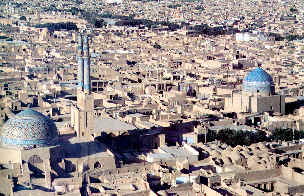|
|
History of Yazd Province: Safavid era
In the time Shah Ismail, Safavid Dynasty ascended to power in Iran. Yazd's government was assigned to Morad Beik Bayandori. At that time, more than forty independent and semi-independent rulers were governing different parts of Iran. Shah Ismail quelled the rebellions and put down the claims of all his contenders and occupied Yazd. But his extremist ways, religious bigotry and absolutely unjustified massacres inflicted heavy damage and loss on Iran, and Yazd in particular. An example of such senseless killings was the murder of Ghazi Mir Hussein Meibodi, who actually had no peer among the scholars of his time. He was burned to death during Shah Ismail's time only on charges of being Sunni.
Under Safavid Kings rule, Iran's trade witnessed a period of expansion and gained a lot of momentum. Iranian silk and textile, in particular, became quite known in European markets and a great number of foreign businessmen traveled to Iran at the time.
European businessmen, on the one hand, and Iranian tradesmen, on the other, were traveling to and from Yazd, via land routes connecting Isfahan and Delhi. Because of the quality of its silk and textiles, as well as its being located on the route between Iran and India, Yazd developed and gained a lot of importance.
When Afghan invaded Iran, with the decline of the Safavid Dynasty, Mahmoud Afghan failed to occupy Yazd and later it was only by restoring to deceptive tactics that Ashraf (Mahmoud's successor) could conquer this region. Later on, appointed by Nader Shah of Afshar Dynasty, Momen Khan ruled Yazd. Mohammad Taqi Khan and his sons were the next rulers of Yazd, who governed the city until the end of Qajar era.
The dynasty rendered valuable services to the city and erected numerous buildings in Yazd. Dowlatabad Garden and Naserieh Garden, Khan School and Bazaar, and Qeisarieh Bazaar are all vestiges of that era.

Yazd City
|
|

